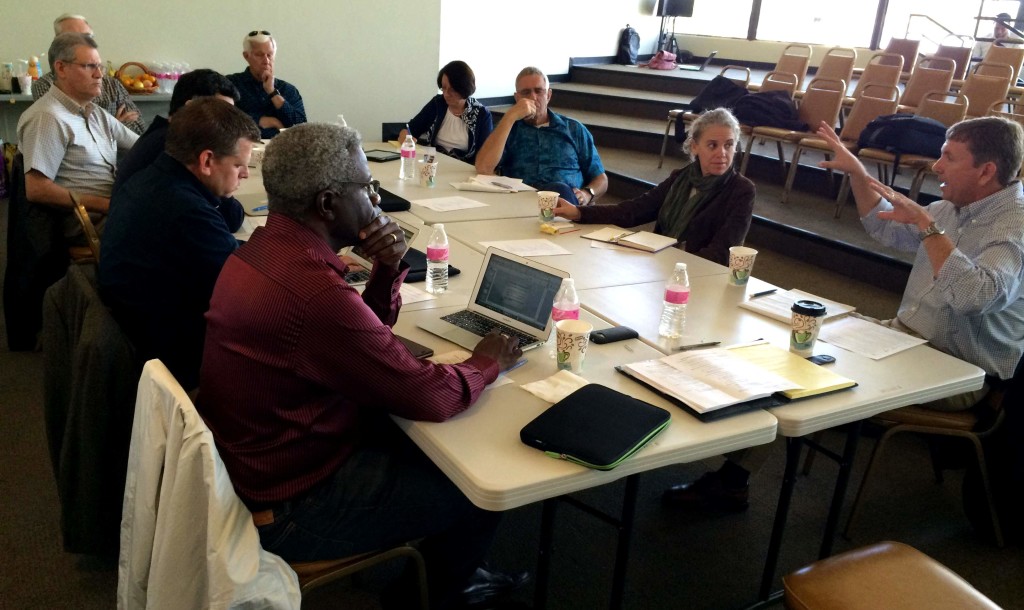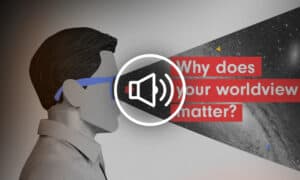In early November 2015, the DNA’s Global Leadership Team held its annual in-person gathering at First Christian Church in Phoenix, Arizona to clarify their roles as leaders of the global DNA movement, to share updates from various regions of the world, and to strategize for the future.
In attendance were Darrow Miller, Bob Moffitt, Anna Ho, Nelson Monteiro, José Curiel, Yarley Niño, Dennis Tongoi, Dwight Vogt and Scott Allen. David Conner was the guest facilitator, and Eric Dalrymple from ReachGlobal also attended.

Listed below are some statements and decisions made by the GLT. Please send the GLT any feedback or questions you may have here. Because the DNA is a decentralized, global network of volunteers, your input as part of the Alliance is very important!
What is the purpose of the GLT, and in what season are we?
- Today, there is much greater acceptance and adoption of wholistic mission in the global church than when the DNA began. There are many more opportunities. It is hard to know how to prioritize in responding to opportunities.
- The early adopters, who are now convinced conceptually and theologically, are moving on to practical implications in various areas (work with the poor, work in various vocations and spheres of society, etc.). This outworking of the implications is the “cutting edge” of the movement now.
- There are an increasing number of “early adopter” people and organizations who are developing training and resources focused on practical application of wholistic mission in a variety of areas/spheres, particularly in the workplace.
- There is a growing conversation about the need for church leaders to develop discipleship methods, practices and resources rooted in a wholistic view of mission, rather than a gnostic sacred-secular frame.
- Still, there are many who have yet to be exposed to the basic theology of wholistic mission and are still functioning from the old dualistic, sacred-secular paradigm.
- There is also a new problem emerging in that some who have jumped into models of working out a wholistic mission in the world may not be well grounded in a biblical worldview. The social-justice movement was cited as an example. There is a danger of reacting to the sacred-secular paradigm by jumping over to the social-gospel paradigm that aligns with a secular worldview.
- We all sense God is still unfolding this work of reforming the Church’s understanding of her purpose and mission. We all feel excited and energized to play a part in this work of God in our own organizations and locations, and corporately as part of the DNA. We all affirmed our calling to this work, and we believe the DNA continues to have a role to play.
What is the DNA? How do we fit within the bigger picture of what God is doing in the Church in this generation? What is our particular “space” in that big picture?
- We affirmed that the purpose of the DNA is to develop and champion ideas, teaching, training and materials that promote a particular set of ideas on God’s purpose in history and the mission of the Church (summarized in the “seven foundational truths”). Specifically, we exist to challenge the sacred-secular paradigm and help the church recover a wholistic understanding and practice of mission rooted in the lordship of Christ and a biblical worldview.
- We affirmed that the DNA does this by disseminating these ideas and materials though a global alliance or network of like-minded trainers, practitioners, organizations and local networks.
- In summary: The DNA is about advancing a particular set of ideas and building relationships among people with a common calling in order to help the Church recover a wholistic theology and practice of mission.
What are the implications of the changing season for the DNA? How do we respond or change as a result?
- When the DNA began, our focus of application was in the context of poverty and the need for the Church to practice a wholistic mission in the way it worked with impoverished communities. We affirmed the historic and ongoing importance of this emphasis coming out of our history, but also the sense of calling to broaden our focus of application to include the practice of wholistic mission in all aspects of life and all spheres of society.
- At the same time, we agreed that the DNA should remain focused on the basic theological foundations for wholistic mission and then point to–or bridge to–the growing number of people and organizations beginning to work out the implications, tools and models of wholistic mission in particular spheres of society. In other words, our strength is in helping people understand (and begin to practice) the basic theology of wholistic mission rooted in a biblical worldview. The implications of this are vast, and we need to align with like-minded people and organizations that are focused on particular spheres (poverty, business, family, art, etc.) and are creating tools/models for application and practice in those areas.
- We discussed that one way we might do this is by identifying and exposing models that are working, and then promoting them. We could add value to the movement by validating and promoting people, tools and organizations doing excellent sphere-specific work in ways that are intentionally grounded in a biblical worldview—by providing a kind of “Intel inside” or “Good Housekeeping” seal of approval.
- A key theme that emerged in this part of our discussion was the need to focus greater attention on younger leaders within the movement–to be strategic in our practice of encouraging them, helping them grow, and raising them up as future leaders.
- We discussed the idea of developing methods and practices to identify emerging young leaders and intentionally coach/mentor them. We discussed re-framing our regional and Global Forum as strategic opportunities to invite and invest in emerging leaders.

What is the GLT?
- We affirmed that the GLT is a volunteer group of “stakeholder representatives” who have positions of influence within the movement, who have deeply bought in to the DNA mission, and who have made a commitment to move the mission forward both locally and globally.
- They are the “joints and ligaments” that keep the DNA network connected.
Is the GLT a leadership team, an advisory team, or something else?
- We affirmed that the GLT is the leadership team of the DNA global network. However, it exercises its leadership relationally rather than organizationally.
- It exercises leadership by defining and clarifying what the DNA is—what its purpose is, and what it means to belong as an affiliated organization, or a local network, etc. It also has takes initiative in carrying out strategic activities (via the Global Secretariat), including the Global Forum, global communications, etc.
- It is relational leadership in that its members are volunteers, and have formal jobs or positions with other organizations or churches affiliated with the DNA. They don’t have direct-line authority over the president of Global Secretariat or Secretariat board members, who have authority to hire/fire the president of the Global Secretariat.
What is the DNA Global Secretariat?
- We affirmed that the Global Secretariat exists to serve the broader DNA movement, and to put organizational “hands and feet” to strategic direction and decisions of the GLT. While the Global Secretariat is responsive and reactive to the decisions of the GLT, it also takes initiative to develop its own projects and strategies to advance the mission of the DNA.
- We briefly discussed that in the current structure, the GLT doesn’t have line authority to hire/fire the president of the Global Secretariat. That authority resides with the Board of Directors of the Global Secretariat.
- We discussed that given the network/alliance nature of the DNA, healthy relationships rooted in trust are essential.
- We also discussed the idea of having the Global Secretariat Board of Directors include the GLT members in evaluating the Global Secretariat president. This would give the GLT a means of expressing concern to the Secretariat board regarding the performance of the president.
- We also agreed that the GLT should always include as a permanent member, the chairman of the board of the Global Secretariat Board of Directors. This person is currently Bob Moffitt.
What are the criteria for GLT members?
- Minimum requirements/qualifications:
- A passion and calling to the DNA’s mission
- A vision for the work of the DNA globally, not just locally
- A proven track record of excellence as a trainer, practitioner or champion
- The financial capacity or organizational support needed to serve on the GLT
- Ideally, the GLT as a whole will include the following in its membership:
- Representatives from various regions of the world
- Representatives from affiliated organizations
- Representatives from active local networks
- Representatives from multiple generations
- Leaders of respected, influential local churches
- Respected, influential thought leaders
- Gifted networkers/connectors
Current GLT Activities (via the Global Secretariat)
- These were affirmed to be:
- Organizing the Global Forum
- Organizing and supporting periodic regional and national forums
- Fostering communication within the alliance (website, e-newsletter, etc)
- Supporting the formation of local networks
- Supporting existing local networks
- Developing teaching, training tools and resources
- Identifying and validating other helpful training tools and resources
- We discussed ways the GLT could be more effective in carrying out these activities
- In our communication:
- Develop a “DNA Bookshelf” online, that lists the very best books, resources under various categories, such as “theology of wholistic mission” and “application for poverty-fighting/community development”, or “application for business” etc.
- Highlight resource PEOPLE and tell their stories and share their models and resources.
- Include more “stories” that show models of people working out the implications of the DNA messages in specific contexts.
- Strengthen connections to affiliated organizations by highlighting their stories.
- Perhaps change the list of people under “local networks” on the website to “resource people” with a short description of each, such as “trainer” or area expert in education, etc.
- In our work convening gatherings of the alliance, regionally or globally:
- Have as a key purpose the fostering of relationships, making introductions and helping form linkages.
- Think in terms of making a strategic investment in people rather than gathering and sharing.
- In our communication:
Support for Affiliated Organizations
- We had a short discussion on how to better support affiliated orgs.
- In our communication, is there a way we can describe how they are engaged?
- How can we better identify the internal champions in affiliated organizations, and invest in them, better support them, and connect them to resources and people?
- We also discussed the criteria for affiliated organizations and affirmed that they do not need to use the historic DNA training messages/materials in order to be an affiliate, but they should bring people, resources or models that closely align with the mission and are rooted in a biblical theology of wholistic mission consistent with the DNA’s seven core truths.
Next Global Forum
- Decision: The next DNA Global Forum will be in the United States in March 2017
- Suggested venues
- YWAM Los Angeles
- Saddleback Church (Los Angeles)
- Young Life camp in Williams, AZ
- Add a day “expanded GLT” at the beginning of the forum for 30-40 emerging leaders who are most connected, engaged. Make this a time to encourage and invest in them, and connect them more strategically.
- Suggested venues
To share comments or questions
with the GLT, please click here!




One Response
Good job, GLT! May God continue to use you…